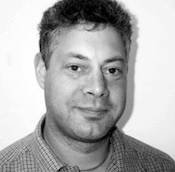Xenophagy provides an important defense against foreign pathogens such as bacteria and viruses by targeting them for degradation through autophagy. The concept of xenophagy dates back as early as 1984, when Dr Yasuko Rikihisa reported that infection of the bacterium Rickettsiae could dramatically induce autophagosome formation in polymorphonuclear leukocytes. Nobel prize-winning research led by Dr. Yoshinori Ohsumi in the early 1990s revealed components of the autophagic machinery including aspects of autophagy initiation, sequestration of cargo, elongation, and maturation of the double-membrane autophagosome, and fusion with the lysosome.
Degradation by Selective Autophagy
With greater understanding of canonical autophagy processes, it was soon realized that autophagy can be targeted in a selective fashion to degrade specific organelles, proteins, and pathogens. Often referred to as “selective autophagy,” these pathways generally involve specialized autophagy cargo receptors, often targeting ubiquitin, and containing LC3-interacting regions (LIR) targeting them to LC3 family members on the autophagosome. Several well-known pathogens can be targeted for degradation through xenophagy, including Salmonella typhimurium, Streptococcus pyogenes, and Mycobacterium tuberculosis, and loss of core autophagy genes can result in enhanced vulnerability to these infections.
 |
Explore the interactive Autophagy Pathway Diagram to explore key protein targets and associated CST products. |
It’s now clear that there exists multiple ways bacteria can succumb to xenophagy, as well ways for them to evade it. Studies of Salmonella have provided important insights into this process. Salmonella enters cells in a membrane-bound vacuole but subsequently escapes using the type III secretion system (T3SS) on the surface of many gram-negative bacteria. Cytosolic bacteria are targeted for intensive ubiquitination, which is then recognized by autophagy receptors like SQSTM1/p62, OPTN, and NDP52 all containing LIR domains for sequestration by the autophagosome. Damaged bacteria-containing vacuoles can also be targeted by galectins, glycan-binding proteins that also bind to the autophagy receptor TAX1BP1.
Finally, TAX1BP1 can also be recruited to Salmonella and Streptococcus through interactions with the LAMTOR1/2 complex, facilitating fusion of the autophagosome and lysosomal. Also appreciated in the process of xenophagy is that post-translational modifications, particularly phosphorylation, can regulate the binding activity of cargo receptors to influence the outcome. For example, the kinase TBK1 involved in innate immunity phosphorylates both SQSMT1/p62 and OPTN, which enhances their ubiquitin-binding activity.
Mechanisms for Avoiding Xenophagy
Not all bacteria lose the battle of xenophagy, however. Many have developed strategies to avoid death by autophagy. These bacteria produce proteins that shield them from detection or inhibit autophagosome formation and lysosome fusion. One example of such an escape mechanism is found with Francisella tularensis , which is coated with polysaccharidic O-antigens that protect it against ubiquitination and xenophagy-dependent destruction.
Another approach used by Shigella flexneri is to block recruitment to the autophagosome by evading association with Atg5 via one of its proteins, IcsB. Shigella also produces VirA, a GTP-activating protein that inhibits Rab1, a GTPase regulating vesicular trafficking and autophagosome formation. Listeria also escapes xenophagy by inhibiting autophagosome maturation through the production of bacterial phospholipases that inhibit phosphatidylinositols required for membrane trafficking in autophagy. Another interesting example is found with Legionella pneumophila, which cleverly encodes a protease RavZ that inactivates LC3 through deconjugation of LC3 and phosphatidylethanolamine.
Of course, these are just a small fraction of how bacteria can engage or subvert autophagy. It is hopeful that further elucidation can lead to the development of rational therapeutics to combat drug-resistant pathogens.
Virophagy
Viral infection, which will generally activate certain stress pathways, can also regulate a form of xenophagy in a process referred to as virophagy. Viruses may induce some aspects of autophagy but inhibit others. Studies of how viruses regulate autophagy have gained considerable interest during the COVID-19 pandemic. Autophagy induced by cellular stress following viral infection has the potential to be an important antiviral defense mechanism by facilitating the clearance of viral particles, regulating inflammatory responses, and producing viral antigens used to generate adaptive immune responses.
However, some aspects of autophagy are pro-viral in nature. RNA viruses, including coronavirus, use the protective environment of double-membrane vesicles formed using autophagy components for its replication. Thus, viruses often develop strategies to subvert degradation by autophagy and in some cases hijack autophagy to enhance replication. Viruses use numerous ways to either directly or indirectly inhibit later stages of autophagy, including autophagosome maturation and lysosomal fusion and degradation.
The interplay between anti-viral and pro-viral activities of autophagy for the pathogenesis of viruses is clearly an area of exciting research and may provide opportunities for therapeutic intervention.
Antibodies for Autophagy and Xenophagy Research
The process of xenophagy is of growing interest as researchers continue to try to understand the mechanisms pathogens use to survive. Cell Signaling Technology has developed fully validated antibodies and kits to meet the needs of autophagy and xenophagy research and therapeutic development.
Additional Resources
- Blog: Autophagy: Taking Out the Cellular Trash Has Widespread Therapeutic Implications
- Blog: It’s a Cell-Eat-Self World: ULK1, AMPK & mTOR Signaling in Autophagy
- Resource Page: Overview of Cell Death
Selected References
- Reggio A, Buonomo V, Grumati P. Eating the unknown: Xenophagy and ER-phagy are cytoprotective defenses against pathogens. Exp Cell Res. 2020;396(1):112276. doi:10.1016/j.yexcr.2020.112276
- Cong Y, Dinesh Kumar N, Mauthe M, Verlhac P, Reggiori F. Manipulation of selective macroautophagy by pathogens at a glance. J Cell Sci. 2020;133(10):jcs240440. Published 2020 May 27. doi:10.1242/jcs.240440
- Levine B. Eating oneself and uninvited guests: autophagy-related pathways in cellular defense. Cell. 2005;120(2):159-162. doi:10.1016/j.cell.2005.01.005
- Choi Y, Bowman JW, Jung JU. Autophagy during viral infection - a double-edged sword. Nat Rev Microbiol. 2018;16(6):341-354. doi:10.1038/s41579-018-0003-6
- Deretic V, Saitoh T, Akira S. Autophagy in infection, inflammation and immunity. Nat Rev Immunol. 2013;13(10):722-737. doi:10.1038/nri3532
- Sargazi S, Sheervalilou R, Rokni M, Shirvaliloo M, Shahraki O, Rezaei N. The role of autophagy in controlling SARS-CoV-2 infection: An overview on virophagy-mediated molecular drug targets. Cell Biol Int. 2021;45(8):1599-1612. doi:10.1002/cbin.11609
- Sharma S, Tiwari M, Tiwari V. Therapeutic strategies against autophagic escape by pathogenic bacteria. Drug Discov Today. 2021;26(3):704-712. doi:10.1016/j.drudis.2020.12.002




/42157_chimeric%20antibody%20blog%20featured3.webp)

